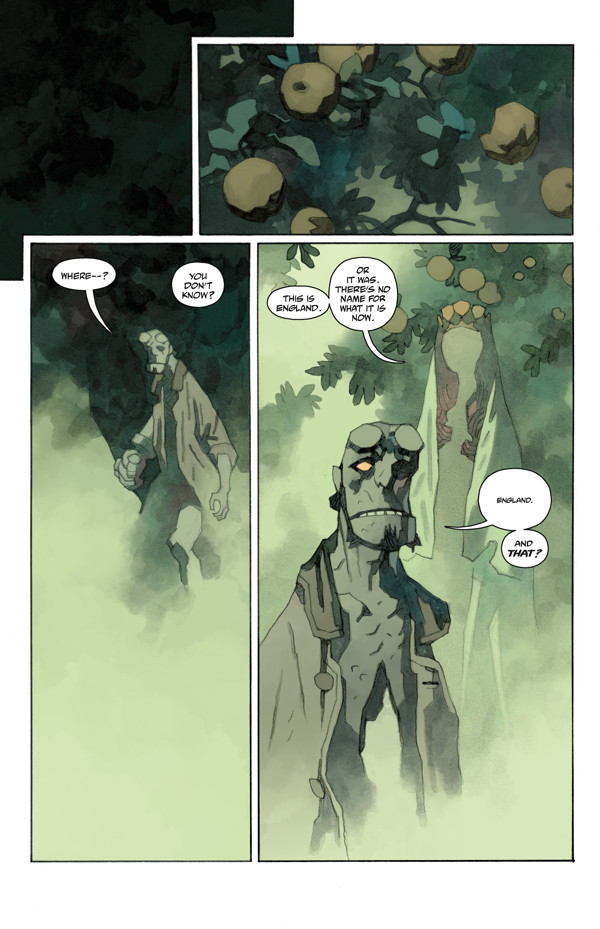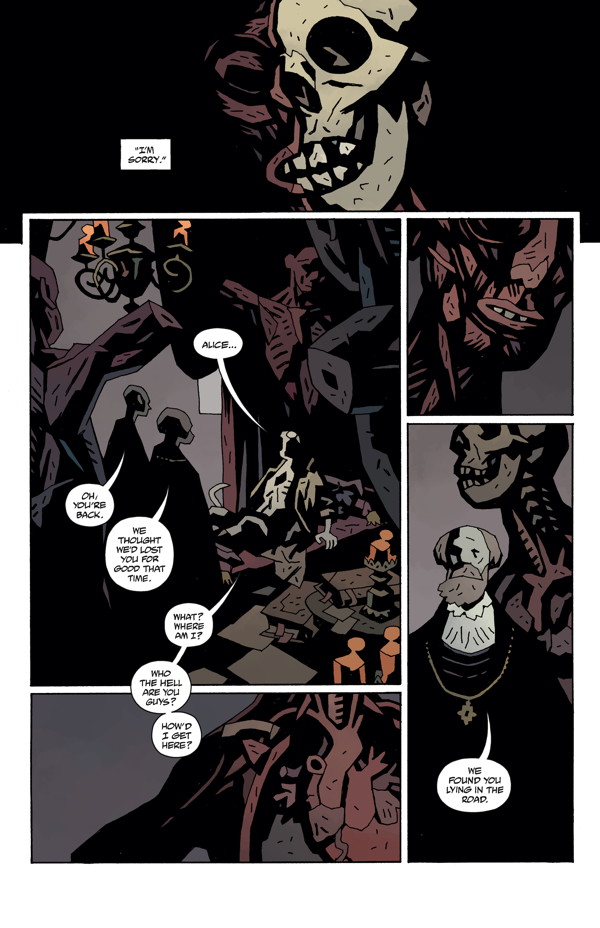Hellboy in Hell #7 Review
Guest post by Alex Sousa
One of the highlights of the “Hellboy” series—and all of its spin-offs—has always been Mike Mignola’s distinct visual style. It’s a refreshing pleasure to have him back on regular series duty, covering both words and art, after his six-year hiatus. Now, finally, after waiting since May of last year, Mignola is back on the scene with more tales of Hellboy’s exploits beyond the grave.

Mignola’s return to creative duties in issue seven isn’t as earth-shattering as it was when he began the first six issues of the “Hellboy in Hell” run, but this current arc is entertaining and exemplary when it comes to the atmospheric, moody depictions of an underworld worthy of comic’s favorite paranormal detective.
Thankfully, the plan going forward is for Mignola to stay on regular art duties. Of course there’s a catch, though. Because of his busy schedule, Hellboy will be sporadic and the run will be comprised of short episodes. Issue #7 is one of those, the first of a two-part arc called “The Hounds of Pluto.”
The story itself feels a little like familiar ground for Hellboy. Even in Hell, it seems, he’s faced with the threat of death. This time, it’s a soul-sucking parasite that has attached itself to him. It’s left him gray and emaciated, forcing him to work his way through a laundry list of curious characters to try and be rid of it before it destroys what’s left of him.
Even in Hell, it seems, he’s faced with the threat of death.
Even in its familiarity, the story is worthwhile. It builds on the Hellboy mythology as Mignola explores his creative options while remaining true to the trademark storytelling that the series is famous for. While in the past the series has been bogged down in its own darkness, Mignola has brought back the levity that makes the melodrama bearable. A fish-mongering golem seems just as well placed in the Hellboy universe as a chorus of skeletal jurors. And as Hellboy tries to cure his parasite, it only takes a well-placed “Jeez” from him to remind readers what exactly it is that makes the series work so well.
Mignola’s sequential art is on point for this run. It maintains forward momentum while still treating readers to his brand of artistic flourishes. Panels are interspersed with eerie statues outside a hellish court of justice, anatomical models seam to whisper from the shadows, and lifeless husks look longingly towards an endless sea. As usual, Dave Stewart’s colors only add to Mignola’s line work to create a bizarre underworld for the titular hero to travel through. Bright reds pop over shadowy purples, creating energy and urgency, especially as the combustible climax builds.

A visual standout, though, is a dream-like, pencil-shaded sequence full of mysterious prophecies about an England that may or may not be. It’s a striking departure from Mignola’s usual heavy lines and shadows, which makes it all the more stunning.
The thing that seems the most fun about the current run is seeing Hellboy unsaddled from his responsibilities to the B.P.R.D. There are no secret missions, no conspiracies, no teammates. It’s just Hellboy and his wits against a seemingly endless underworld occupied by a rogues’ gallery of villains.
Given Mignola’s history of short stories, the current run of “Hellboy” seems to be benefitting from the condensed parameters. Hellboy is at his best when the world isn’t at stake, when he has freedom to move and explore. The setting is as fascinating as any of the characters and in its current iteration readers have a chance to really explore it.
8/10